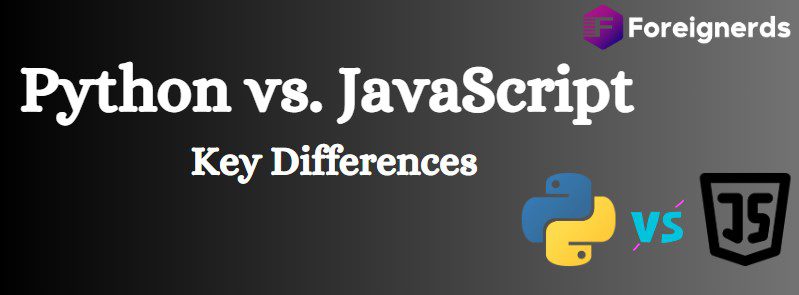- Home
- Website Development & Designing
- Python vs. JavaScript – Key Differences

In the vast realm of programming languages, Python and JavaScript stand out as two of the most popular and versatile options. While both serve essential roles in the world of software development, they possess distinct characteristics that cater to different needs and applications. This article aims to delve into the core differences between Python and JavaScript, shedding light on their strengths, weaknesses, and ideal use cases.
Python prides itself on its simple and readable syntax, making it an excellent choice for beginners. The use of indentation for code blocks enhances code readability.
Python is a general-purpose language known for its adaptability. It finds utility in web development, data analysis, artificial intelligence, and more.
Python boasts a vast library ecosystem, including NumPy, Pandas, and TensorFlow, which accelerates development and reduces coding effort.
Python tends to be slower in execution compared to JavaScript, which may impact performance in certain applications.
JavaScript is primarily used for client-side web development, ensuring compatibility with all major browsers. It allows for dynamic content manipulation.
JavaScript executes faster than Python, making it a suitable choice for real-time applications and interactive web experiences.
JavaScript’s asynchronous nature enables non-blocking operations, ensuring a smooth user experience even during resource-intensive tasks.
While JavaScript’s versatility is growing, it is primarily used for web development and may not be as well-suited for tasks beyond the browser.
- Python: Dynamically typed (variable types can change during runtime)
- JavaScript: Weakly typed (automatic type coercion)
- Python: Gentle learning curve, suitable for beginners.
- JavaScript: Can be challenging for newcomers due to its quirks.
- Python: Boasts a large and active community with extensive documentation.
- JavaScript: Highly active community, particularly in the context of web development.
When deciding between Python and JavaScript, consider your project’s requirements. Python excels in data analysis, machine learning, and server-side applications, while JavaScript shines in web development.
Evaluate your team’s familiarity with each language. A team well-versed in Python may struggle when transitioning to JavaScript and vice versa.
Determine your project’s goals. Python offers robust data manipulation capabilities, while JavaScript is essential for creating dynamic web interfaces.
In conclusion, Python and JavaScript are powerful programming languages, each with its unique strengths and ideal use cases. The choice between them ultimately depends on the specific needs of your project and your team’s expertise. By considering the differences highlighted in this article, you can make an informed decision to achieve your development goals effectively.
© 2013 - 2025 Foreignerds. All Rights Reserved